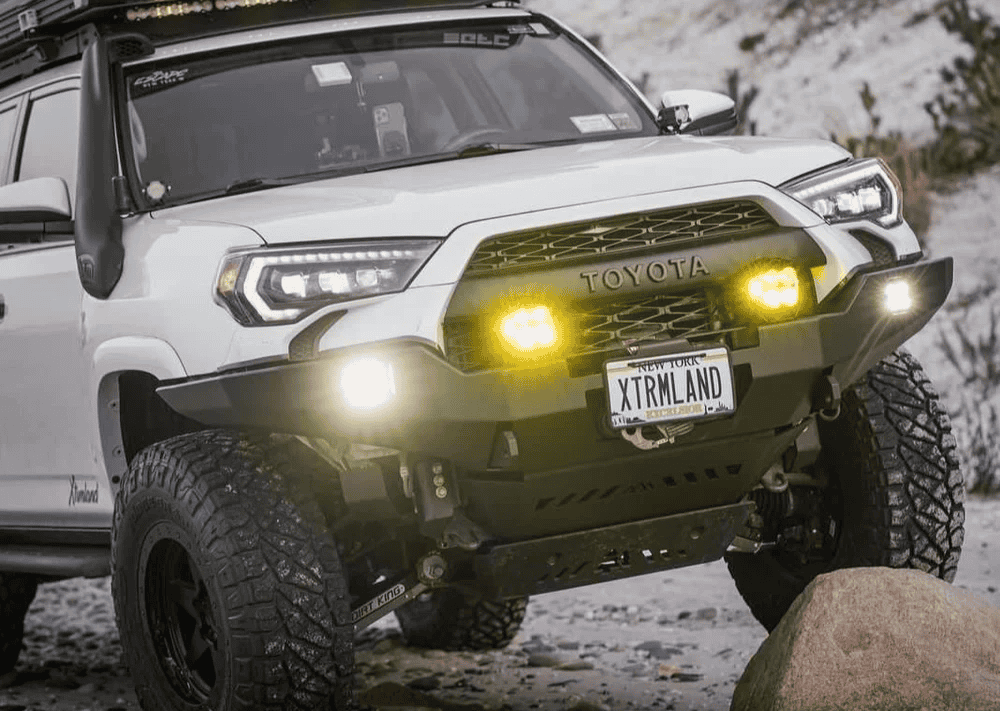Overland Vehicles

Vehicle based adventure fabrication turns a stock platform into a capable travel machine by designing and building parts that endure real trail abuse. It means creating smart storage, strong mounting points, and integrated systems for power, water, and heat that function as a single ecosystem. Every bracket, panel, and wire route accounts for vibration, flex, and weight transfer. The goal is simple to state and hard to achieve: a quiet, safe, and serviceable setup that carries people and gear into remote places and back again. That requires disciplined engineering choices, careful material selection, and hands that know how to fit and finish.
Start with a use case. Are you hauling bikes and boards, carrying a moto, or living remote for weeks at a time? Payload capacity sets boundaries for materials and features. A proper weight budget includes occupants, water, fuel, recovery gear, and every drawer slide and fastener. Center of gravity matters more than looks, so heavy items live low and inside the axle span. Plan wire runs early, keep service loops accessible, and protect everything from abrasion.
Aluminum keeps weight down for cabinetry, roof gear, and racks, especially when paired with rivnuts and structural adhesives that prevent galvanic issues. Steel is right for bumpers, recovery points, and anything that might see direct trail impact. Use stainless fasteners with anti seize and choose finishes that match the environment. Powder coat resists chips better than paint, and sealed birch or composites work well where moisture is common. The best builds blend materials to hit strength and weight targets without overbuilding.
Reliable power and water systems separate a weekend run from extended travel. A compact electrical layout with a protected battery bank, fused distribution, and clear labeling makes troubleshooting possible on the side of a forest road. Solar helps, but alternator charging and smart DC to DC units keep batteries topped when the sun does not. Inverters should match real appliance loads, while 12 volt circuits serve lighting and refrigeration efficiently.
A simple water system with a strainer, quiet pump, accumulator, and serviceable filters beats a complex maze of valves. Keep lines short and insulated where needed. For climate, consider ventilated enclosures for electronics, reflective insulation, and managed airflow to prevent condensation. Diesel or gas fired heaters provide efficient warmth if installed with correct clearances and exhaust routing. Every hole through the body needs sealing, and every hose clamp should be accessible without dismantling half the interior.
Roof and exterior gear increase leverage on the chassis, so mounting points must tie into structural members, not thin sheet alone. Spreader plates, gussets, and backing plates distribute load and prevent metal fatigue. Inside the cabin, use track systems and modular mounts to secure bins, bikes, and tools. Think like an engineer on braking events, not just cruising. If a mount would fail in an emergency stop, redesign it.
Good fabrication follows a repeatable workflow. Start with a measured 3D model or precise templates, then mockup components in foam or plywood to confirm ergonomics and clearance. Electrical and plumbing diagrams prevent guesswork later. Fabrication should keep heat input controlled to avoid warping panels and doors. Edges get deburred, and any moving surfaces run on quality slides or hinges tested for cycle life.
Follow best practices for wire gauge, fuse placement, and grounding. Use crimped and heat sealed connections with proper strain relief. Vent battery spaces as required by chemistry, and protect high current cables. Propane components need rated lines and leak testing. Even when regulations vary by region, adopting proven standards creates safer, quieter rigs.
Shake down trips reveal more than any shop inspection. Listen for squeaks, watch for hot spots in electronics, and check fasteners after the first rough miles. Design with maintenance in mind, so pumps, filters, and fuses are reachable without tearing apart cabinetry. Label everything. A well documented rig travels farther because small issues get solved quickly.
OZK Customs takes this approach from concept through handoff. Our team in Fayetteville builds adventure vans and overland rigs with proven materials, clean systems, and thoughtful mounts that stay silent on washboard. Explore our overland rigs to see how we translate these principles into real platforms. For specialized layouts, our custom overland upfit process aligns the build to your payload and travel style, from electrical architecture to storage geometry. If you are comparing shops, learn more about our process and customer care at why choose OZK Customs.
When you are ready to turn plans into metal, wiring, and road miles, we will walk your goals, map the weight budget, and fabricate a rig that works as hard as you travel. From first sketch to trail test, the focus stays on reliability, quiet operation, and problem free service down the line.
Ready for a purpose built rig that carries real weight, powers off grid life, and survives washboard roads without a rattle? Book a build consult with OZK Customs in Fayetteville to map your goals, budget, and timeline. We design and fabricate complete adventure vans and overland rigs, test everything at handoff, and send you out dialed with a clear care plan. Tell us how you travel and we will engineer the right solution.
ADDRESS:
6159 E Huntsville Rd, Fayetteville, AR 72701
PHONE:
(479) 326-9200
EMAIL:
info@ozkvans.com